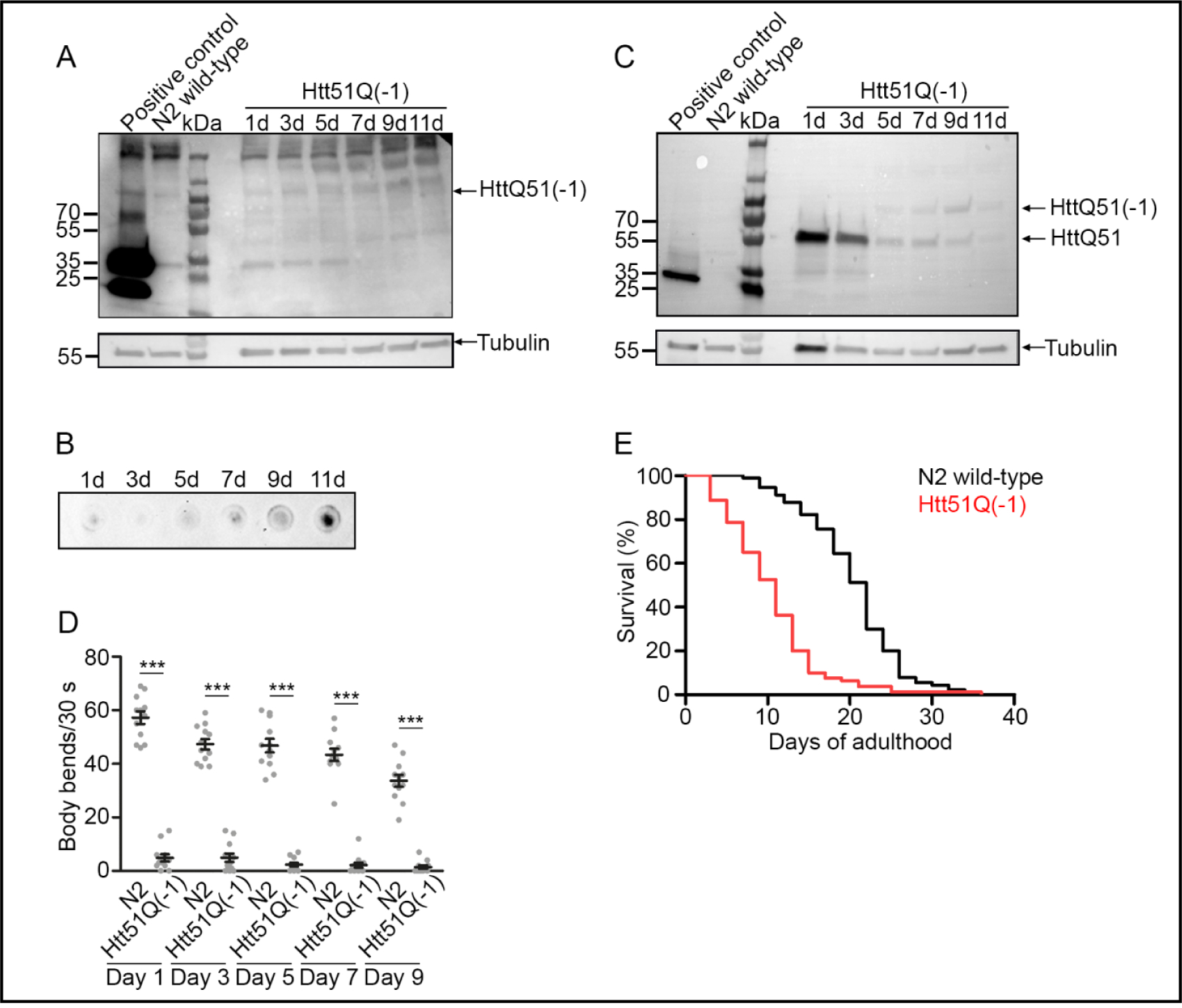Fig. 2.

Aggregates containing −1 frameshifted Htt51Q persist with age in C. elegans with genome-integrated frameshift reporter. (A,C) Immunoblot of synchronized nematodes at different ages to detect soluble trans-frame and zero-frame proteins. 50 μg of protein were loaded per lane and trans-frame proteins were detected with anti-mCherry antibodies (A) and zero-frame proteins with anti-GFP antibody (C). Arrows indicate the position of the Htt51Q(−1) or Htt51Q monomers, respectively. Note the extended exposure in mCherry channel (A) compared to CFP channel (C) to enable detection of frameshift products, which were produced in very low amounts. Immunoblot membranes were stripped and reprobed with anti-tubulin antibody (A,C). As a positive control animals expressing both, GFP and mCherry, were used (ANR127). The signal at 250 kDa results from unspecific binding of mCherry antibodies. As a negative control, N2 animals were loaded. Note, the tubulin signal overlaps with CFP-polyQ in size; hence, the enhanced tubulin amount at 1d might be due to inefficient stripping in this part of the blot (C). (B) Filter-retardation assay of synchronized animals at different ages. 30 animals were loaded per sample and frameshifted Htt51Q(−1) was detected with anti-mCherry antibodies. (D) Motility assay on different days of adulthood. Each dot represents one single nematode, the horizontal line indicates the mean thrashing rate (± SEM, n = 10 animals for each strain and time point). Data among one time-point are normalized to the body bends of N2 wild-type. ***p < 0.001 (Student’s t-test). (E) Life span assay of wild-type N2 and nematodes expressing Htt51Q(−1). Kaplan-Meier survival curves were compared using log-rank test. Median lifespan of 12.5 days for animals with integrated expression of Htt51Q(−1) vs. 22 days for N2. p<0.001 for animals with integrated Htt51Q(−1) vs. N2, (log-rank test). See also Fig. S2B.
